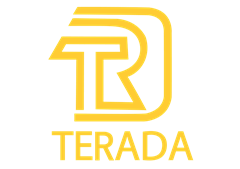What Does Rigging Equipment Include and How Often Should It Be Checked?

If objects are to be hoisted for assembly, disassembly, or hooking or unhooking, a qualified hoist is required. Terada Hardware provides standards-compliant rigging hardware for your business, read on for some information on rigging hardware.
What Does Rigging Hardware Equipment Include?
Rigging equipment includes all components and equipment used to lift, pull, push and hoist large objects in industries such as construction, engineering, and event stages. Rigging equipment is a device used to safely secure and distribute the weight of a lifted object to mobile equipment. Moving equipment depends on the type of rigging work that needs to be done.
For example, jacks are used for lifting; skates and carts are used for pushing; chains, hooks, and tie-downs are used for pulling; and chain hoists are used for lifting. Sometimes objects are too heavy to use the aforementioned equipment, requiring the use of heavy equipment such as cranes, forklifts, double lifts, and risers.
For example, to secure heavy objects to a crane, you will need rigging equipment. Rigging equipment is diverse and specialized for the environments required to move loads and move objects. Some examples include wire rope slings, webbing slings, chain slings, wire mesh slings, splayed beams, and various rigging hardware.
How Often Should a Lifting Chain Be Tested?
Hoist chains require a proof test before first use according to the manufacturer's recommended proof test load and the American Society for Testing and Maintenance. If any repairs are made, the hoisting chain will also need to be verified again for testing. This is to ensure that the chain meets the original strength requirements, that the damaged links are replaced, and that the material used to replace the links is appropriate. After the test is completed, the paperwork should be retained.
How Often Should Rigging Equipment Be Checked?
The frequency of rigging inspections may vary, depending on the type of rigging equipment used and how often it is used. Visual inspections should be carried out frequently in-house by qualified personnel. New rigging equipment that has just been shipped from the manufacturer should be inspected to make sure it is the correct equipment and is rated enough for the load you will be rigging. Rigging equipment should also be inspected daily for any damage, defects, or signs of wear prior to use.
If the device is used for multiple apps or multiple apps per day, it should be checked before each shift and between app changes. You are required to have your equipment inspected by qualified personnel for at least one periodic inspection at least every 12 months.
What Are the Most Commonly Used Rigging Materials?
Slings are the most commonly used rigging material because they are needed to support the suspended loads of heavy equipment such as cranes and forklifts. There are a variety of slings made of different materials, including wire, chain, mesh, and synthetics. Wire rope is the most commonly used sling material.
What Factors Should Be Considered When Choosing a Sling?
Employers and workers must be careful when selecting slings for rigging applications. Each sling type has pros and cons, and not all sling types are suitable for every job. The selection of sling type should be based on the characteristics of the load, such as size, weight, temperature, sensitivity, shape, and operating conditions, and balanced with the characteristics of the sling.
The wire rope rigging of the wire rope core is very strong and resistant to damage. Chains are primarily used in harsh lifting conditions due to their strength, but they are susceptible to shock damage. Mesh slings combine wire and chain slings to greatly increase load balancing. Synthetic slings are lightweight and best used if the load needs to be protected from damage but is not suitable for working conditions with high temperatures, sharp objects, or exposure to acids.
What is the Difference Between Lifting and Rigging?
Lifting is just one application of rigging. Rigging is the manipulation of heavy objects by pushing, pulling, lifting, or hoisting. Lifting is a method of moving a heavy object by using a jack to move the object upwards from below.
The above briefly introduces some basic problems of rigging hardware. If you want to buy rigging hardware, please contact us.
Terada Hardware is a professional custom rigging accessories manufacturer. We offer a full range of hardware. Our accessories are widely used in shading structures, tensile structures, fabric stretching, wire railings, railing systems, railing systems, marine, lifting and other industries.


 TERADA HARDWARE
TERADA HARDWARE

